52 Ancestors in 52 Weeks, nos. 29 & 30—Matti Lampinen (b. 1835) and Anna Miettinen (b.1832)
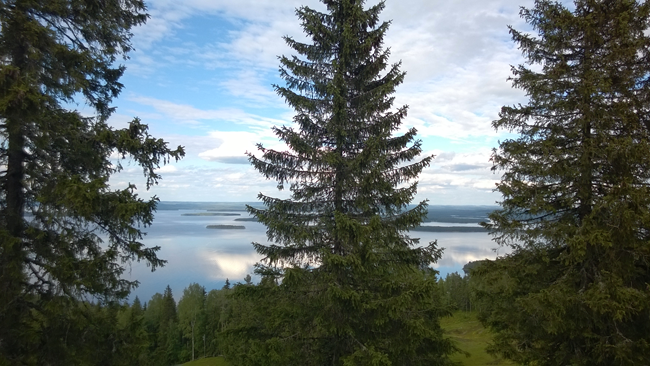
Karelia
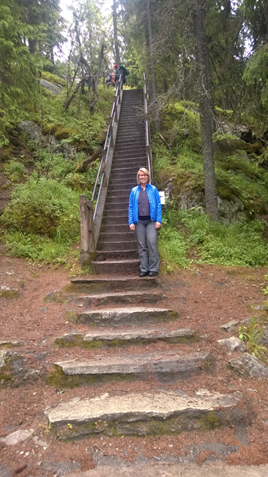 The Lampinen family lived in the area of the present-day Koli National Park in eastern Finland. The park lies west of Lake Pielinen, the fourth-largest in Finland, in the sub-region known as Karelia. Here the gorgeous forest landscape near the lake includes rock outcroppings intermingled with lush groves of spruce, birch, and other trees. The undergrowth is rich in mushrooms and berries. Wolverine, lynx, bear, and beaver abound.
The Lampinen family lived in the area of the present-day Koli National Park in eastern Finland. The park lies west of Lake Pielinen, the fourth-largest in Finland, in the sub-region known as Karelia. Here the gorgeous forest landscape near the lake includes rock outcroppings intermingled with lush groves of spruce, birch, and other trees. The undergrowth is rich in mushrooms and berries. Wolverine, lynx, bear, and beaver abound.
People have lived in the Koli area since before Christianity. It had been a center of pre-Christian religion. The highest point above the lake is still known as the Temple of Silence. The cave formations in the nearby rocks were thought to house wizards and witches.
The Karelians consider themselves the true Finns, uncorrupted by Swedish intermarriage and Germanic influence. Unlike many other Finns, they are lively and talkative. Historically, they ate a distinctive diet marked with local fish and game, often made into pasties.
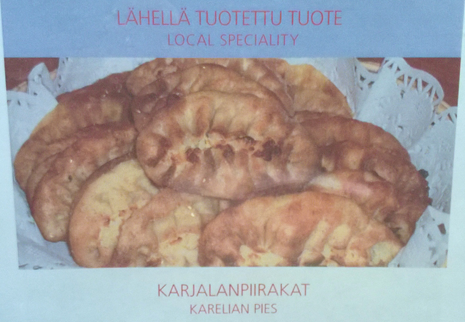
Karelia, especially the Koli area, became a vacation destination for hikers and skiers in the 19th century. Others, including Finland’s great composer Jean Sibelius, came to enjoy the local folklore and the traditional culture. By the time these visitors discovered Koli, the Lampinen family had lived there for a long time.
In the 1830’s they ived in the tiny Karelian village of Nunnanlaks on the western shore of Lake Pielinen. There Valborg Johansdotter Ruottin (1808-after 1860) gave birth to her son Matti Lampinen on 27 September 1835.
She and her husband Henric Mårtensson Lambin (1806-1837) had him baptized in the Juuka parish on 25 October 1835. At this time, spelling and naming patterns had not become standardized, so we see the family name in the records in several iterations, including Lambin, Lampin, Lambinen, and Lampinen. Karelians were early adopters of surnames because they moved around a lot.
Little Matti joined an older brother, Henric, who had been born on 8 August 1832 in the same village. They probably lived in a log house decorated with carvings, but those houses no longer remain. Today Nunnanlaks is known for its soapstone mine.
The boys were born into an ancient swidden, or slash-and-burn culture. Crofters like their father lived by cultivating clearings in the forest. They felled and burned broad-leaf trees, especially birch, in 10-to-30-year intervals. This created a patchwork landscape of varied woodland habitat around settlements.
In the second year, crofters planted turnips, sowed by spitting the seeds. They stored these and other root crops like carrots and rutabaga in cellars dug in the ground.
The third year, they could plant grains such as oats, flax, buckwheat, and rye. They built traditional pole fences to protect these crop fields from livestock. In the fall, they harvested the crops by hand, with a sickle, and then threshed them in a barn.
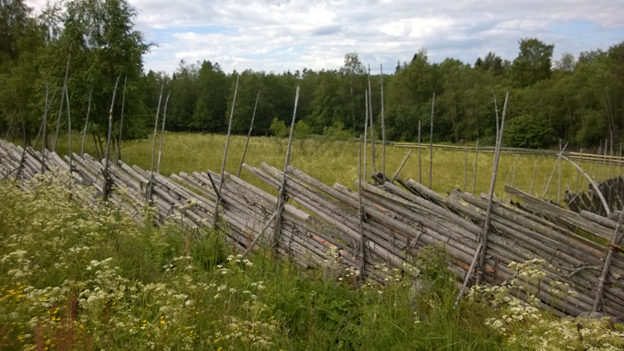 A traditional Finnish fence
A traditional Finnish fence
Once the soil became depleted, they began the swidden cycle again in a new location. As young trees began to grow back, they grazed livestock in the sparse, well-lit forest. They often acquired a pig around midsummer to fatten up for Christmas.
The little Lampinen family did not stay long at Nunnanlaks. By early 1837, when Matti was just over a year old, they had moved on to an inland village, Kuhnusta. That year, the elder Henric contracted typhoid fever and died on 10 February 1837 at the age of thirty. It is unlikely that Matti would have had any memories of his father.
His mother remarried the next year. Valborg Ruottin and Christer Mårtensson Karjalain were wed in Juuka parish on 1 September 1838. Their son Eric, Matti’s half-brother, was born on 29 April 1839 at Nunnanlaks. He was followed by a half-sister named Christina on 24 September 1841.
By 1842, this family, too, had located in Kuhnusta. There, tragedy struck again, and on 2 June 1842 Christer Karjalain died at age 31 from a heart attack. Seven-year-old Matti was fatherless for the second time.
It seems Valborg waited several years to marry a third time. When Matti and Henric were 14 and 17, their mother and Anders Rompanen married. Again in the Juuka parish, the wedding occurred on 14 April 1850. During the following decade, Valborg and Anders lived sometimes at Kuhnusta and sometimes at Nunnanlaks.
Also during the 1850’s Matti courted a young woman from the neighboring village of Halivaara. Anna Miettinen was three years older than Matti. Her parents were Henric Henricson Miettinen (c.1804-1836) of Halivaara and Anna Andersdotter Toivain (1802-after1858) of Kajo.
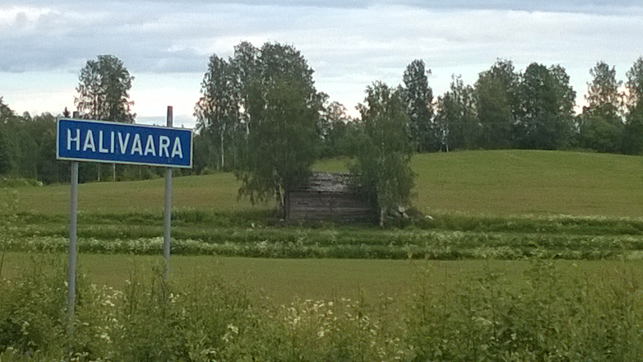
Anna Miettinen’s parents had married in Juuka parish on 27 December 1819, and they had seven children, all born at Halivaara:
- Carin, born 30 June 1821,
- Henric, born 3 August 1823,
- Christina, born 9 November 1827,
- Margret, born 17 September 1829,
- Johan, born 17 February 1830,
- Anna, born 5 February 1832,
- Brita, born 7 August 1835.
Like Matti, Anna lost her father at an early age. Henric Miettinen died of a fever at age 32 at Halivaara on 22 October 1836, when Anna was four years old. No more is known of Anna’s mother Anna Toivain. She was still living at age 55 when she attended a kinkeri or catechism meeting in Juuka parish in 1857.
Matti Lampinen and Anna Miettinen were married in Juuka parish on 7 December 1856. As his father had, Matti worked as a cottager, or tenant farmer.
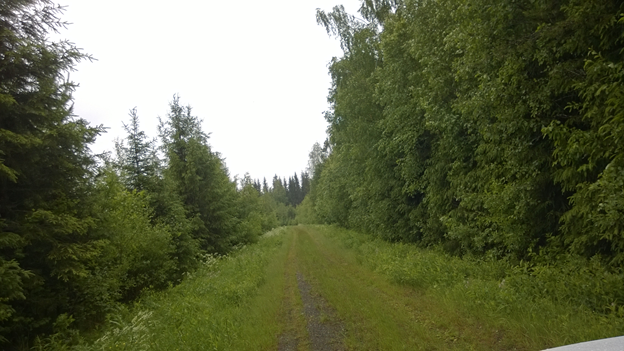 Forest near Nunnanlaks and Kuhnusta
Forest near Nunnanlaks and Kuhnusta
They lived sometimes at Nunnanlaks and sometimes at Kuhnusta, and they had the typically large Finnish family of twelve children:
- Henric, born at Nunnanlaks on 14 July 1857,
- Anna Valborg, born at Kuhnusta on 2 May 1859,
- Eva Stina, born at Kuhnusta on 26 March 1861,
- Hendrika, born at Nunnanlaks on 27 November 1862,
- Matts, born at Nunnanlaks on 9 May 1864,
- Alexander, born at Nunnanlaks on 1 April 1866,
- Adam, born at Nunnanlaks on 1 April 1868,
- Alexis, born at Nunnanlaks on 2 August 1868,
- Mathias, born at Nunnanlaks on 7 December 1870,
- Lovisa, born at Nunnanlaks on 11 March 1873,
- Anders, born at Nunnanlaks on 6 December 1876,
- Ada Alina, born at Nunnanlaks on 25 September 1879.
We do not know how long Matti and Anna lived because the available records end in 1880, the year after Ada Alina was born. Presumably, they lived out their lives in Juuka parish and were buried there.
 Juuka church
Juuka church
During their lifetime, the Koli area began to attract big names in Finnish art. Painters like Eero Järnefelt and composers like Jean Sibelius returned year after year for inspiration. Järnefelt painted the internationally-known An Autumn Scene on Lake Pielisjärvi in 1899, and Sibelius composed his fourth symphony (“Koli”) in 1909 after a trip there. The Koli National Park was eventually founded in 1991. Today, the entire area where Matti and Anna Lampinen lived is a beautiful park enjoyed by all the Finns.